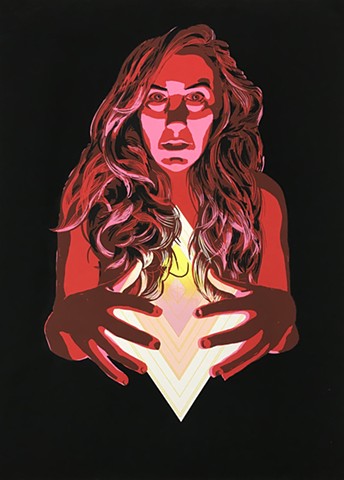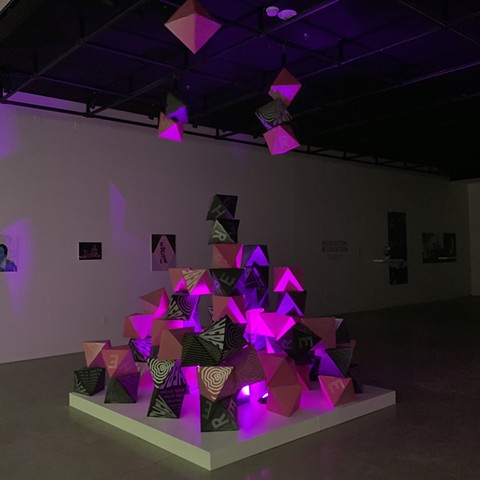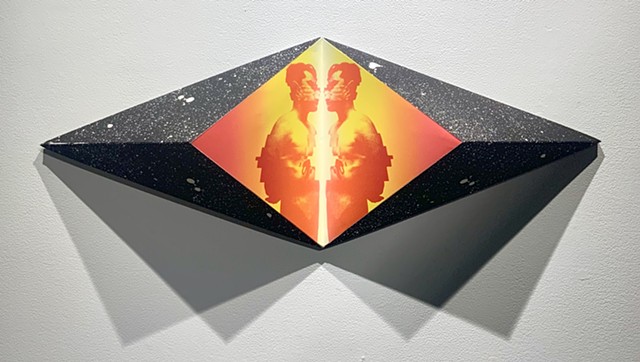Ash Armenta
Ash Armenta
Website: www.asharmenta.com
Instagram: @ash_armenta_prints
Bio: Ash Armenta is an artist from the Bay Area of California working in printmaking. They are a prospective 2022 MFA candidate at the University of Wisconsin-Madison. Ash utilizes most forms of traditional printmaking practices. They are currently interested in following a line of inquiry that asks where and what is a queer utopia? How can one queer the concept of linear time to perhaps connect moments, expressions, realizations of utopia in less of a forward trajectory, but perhaps through a web that can travel multidirectionally? Ash addresses these questions through creating two and three dimensional printed work.
In 2018 Ash opened Little Giant Collective, a member-owned cooperative print studio in Santa Cruz, Ca. They concluded the two year program at Tamarind Institute and received the title of Tamarind Master Printer in 2017. The program included several collaborations with artists such as Matt Shlian, Rashaad Newsome, Nicola Lopez, and Nina Elder.
Ash enjoys printing collaboratively with artists as well as printing personal work, tattooing professionally, doing graphic design, illustration, lettering and typography, woodworking, painting outdoor murals, and anything involving handmade fine details.
Artist Statement: This work considers the potential and the embodiment of queer being. It suggests the promise future of queer existence by acknowledging the now, the here. It remembers queerness past. Incorporating figures into this work has allowed me an intimate lens by the way of portraiture. The source imagery for these pieces were shared with me after I asked close friends: What image of yourself do you feel yourself embodying and emanating your own queer power?
As a developing motif within my work, I have been drawn to polyhedral geometry, particularly the representation of the octahedron. Through my research I have come to realize that my personal symbology behind this shape echoes the queer historical significance of the pink triangle. Historically the pink triangle as a symbol was first used during the Holocaust to identify and shame Jewish people thought to be homosexual. The pink triangle was then adopted by gay rights activists in the 1970’s as a reminder of that atrocity and a pledge to continue fighting against queer oppression. Today the inverted pink triangle has become synonymous with LGBTQ struggle and continues to be present in our contemporary visual culture. I respond to the triangle’s presence in our collective consciousness by asking it to be more than a symbol that can exist on a two-dimensional plane. Queerness is expansive, and multidimensional in its lived experiences and realities. I see an octahedron as a shape which uses the triangle to build an object more comprehensively reflective of my own experience.
When considering past, present, and future I see our collective experiences as immanent and powerful. When we embody our queer power, we engage with entelechy as a realization of our potential. I imagine seeds when thinking about that space of embodying potential. I try to veer from the trope that we are growing single directionally, or building towards something, “a better future” and the like which feels hierarchical and as if it does not honor our now-ness. Instead of seeing our existence in a timeline that may one day reach some zenith of freedom or collective actualization, I hope to suggest in my work a transcendent conceptualization of queer being. This line of thought, of existential imagination, is for me a decidedly optimistic view. Better put, it is a refusal to not see my queerness reflected everywhere.


